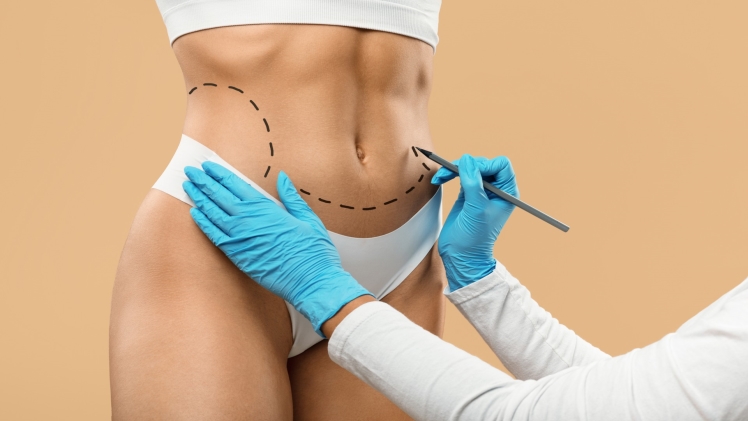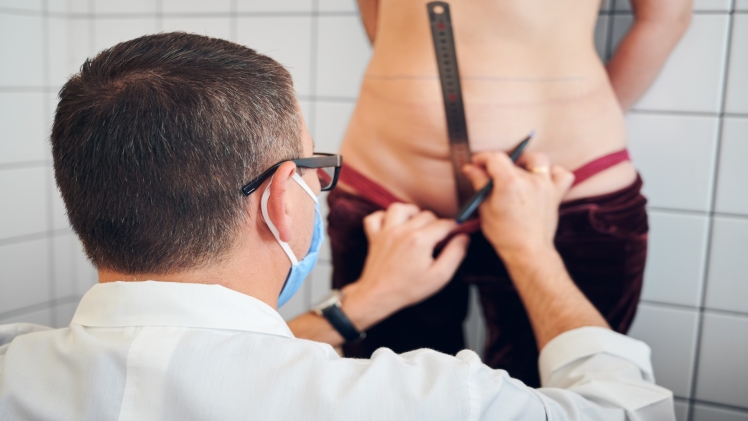Tummy tucks have become a go-to option for people who need to slim and firm up their abdomen and eliminate excess skin. Different types of procedures are available in this category, each one designed to address specific concerns and achieve different outcomes. Keep reading to learn more about these procedures and which one may be right for you.
Traditional Tummy Tuck
Traditional abdominoplasties are the most common tummy tuck procedures. They involve making a horizontal incision between the hip bones that typically extends from one hip to the other. Plastic surgeons then remove excess skin and fat from the abdomen and tighten the abdominal muscles. They reposition the belly button too, if needed.
This procedure is ideal for those with significant excess skin and fat in the abdominal area. People who undergo this type of procedure can generally return to their normal routines after a 4-to-8-week recovery time. That may vary depending on your unique circumstances, though.
Mini Tummy Tuck
Mini tummy tucks are less extensive than full abdominoplasties. They’re recommended for people who have minimal excess skin and fat below the belly button. With this procedure, the incision is shorter, and the belly button may not need to be repositioned. Mini tummy tucks focus on the lower abdomen. They’re faster procedures, and they often come with shorter recovery periods.
Extended Tummy Tuck
Plastic surgeons like Dr. Racanelli also offer extended tummy tucks. These procedures are similar to traditional abdominoplasties, but they’re more extensive. They involve making an incision that reaches further around the hips toward the back. They’re suitable for people who have excess skin and fat in the abdominal area as well as the sides and lower back. Extended tummy tucks allow for a more complete recontouring of the torso.
Fleur-de-Lis Tummy Tuck
For people who’ve experienced significant weight loss that resulted in excessive amounts of excess skin, a fleur-de-lis tummy tuck may be recommended. This procedure entails making an incision both vertically and horizontally to remove excess skin from the upper and lower abdomen. This achieves a more significant transformation, but it’s not the right procedure for everyone.
Reverse Tummy Tuck
Reverse tummy tucks focus on the upper abdomen rather than the lower. An incision is made along the lower edge of the rib cage in this procedure, so the surgeon can remove excess skin and fat from the upper abdominal area. It’s recommended for people who have sagging skin in the upper abdomen but minimal issues in the lower abdomen.
Floating Tummy Tuck
The floating tummy tuck is a newer technique that involves releasing the belly button from the abdominal tissue. That allows it to essentially float after excess skin and fat are removed. It provides more flexibility in repositioning the belly button for more natural-looking results.
Circumferential Tummy Tuck
Circumferential tummy tucks are more inclusive procedures than the others listed here. They go beyond the abdominal area to remove excess skin and fat from the hips, lower back, and buttocks. For this procedure, the incision typically extends around the entire waistline. People who have lost significant amounts of weight and have excessive amounts of loose skin as a result may be suitable candidates for this type of procedure.

Eliminating Excess Abdominal Skin and Fat
Several options are available for people who are interested in a tummy tuck. Be sure to consult with a board-certified plastic surgeon to find out which procedure is best for you. A qualified plastic surgeon can ensure a safe, successful tummy tuck procedure for the results you’re looking for.


